4 December. Threat level increases in SW Asia and E Africa
The current threat levels have increased in several countries in view of swarm migration from the summer breeding areas.
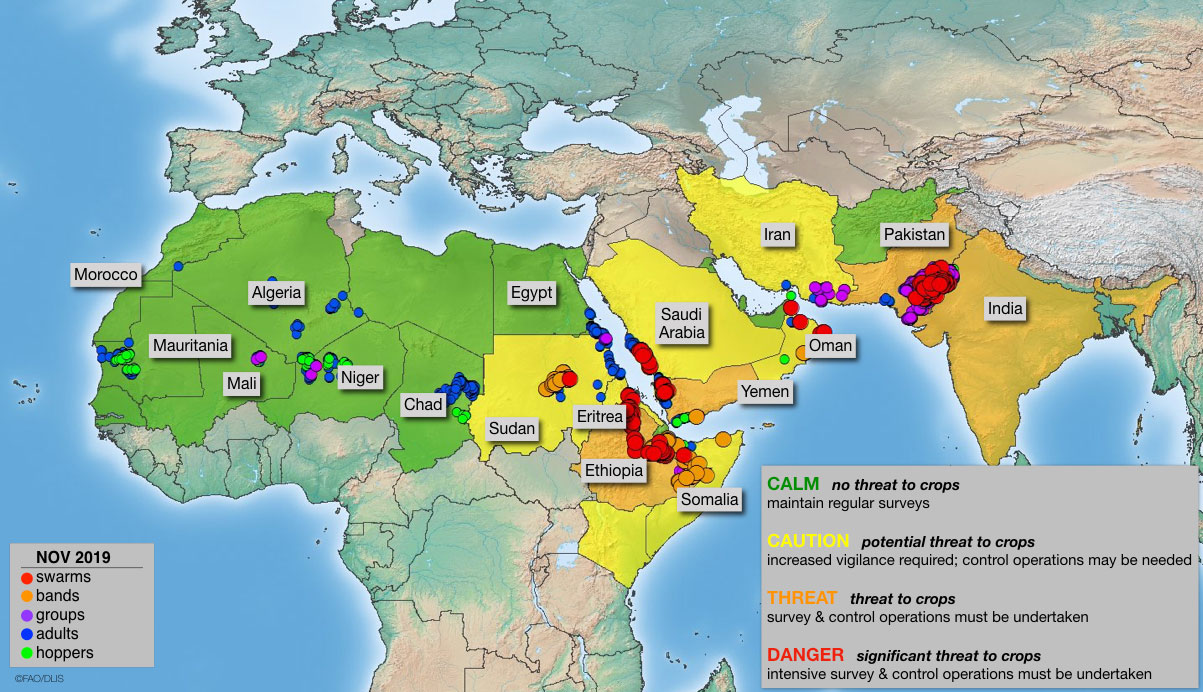
4 November. Caution level extends further in SW Asia and Horn of Africa
The current threat level persists along the Indo-Pakistan border and in Yemen and Ethiopia while a caution level has been extended to Iran and Kenya due to the possibility of invading swarms.
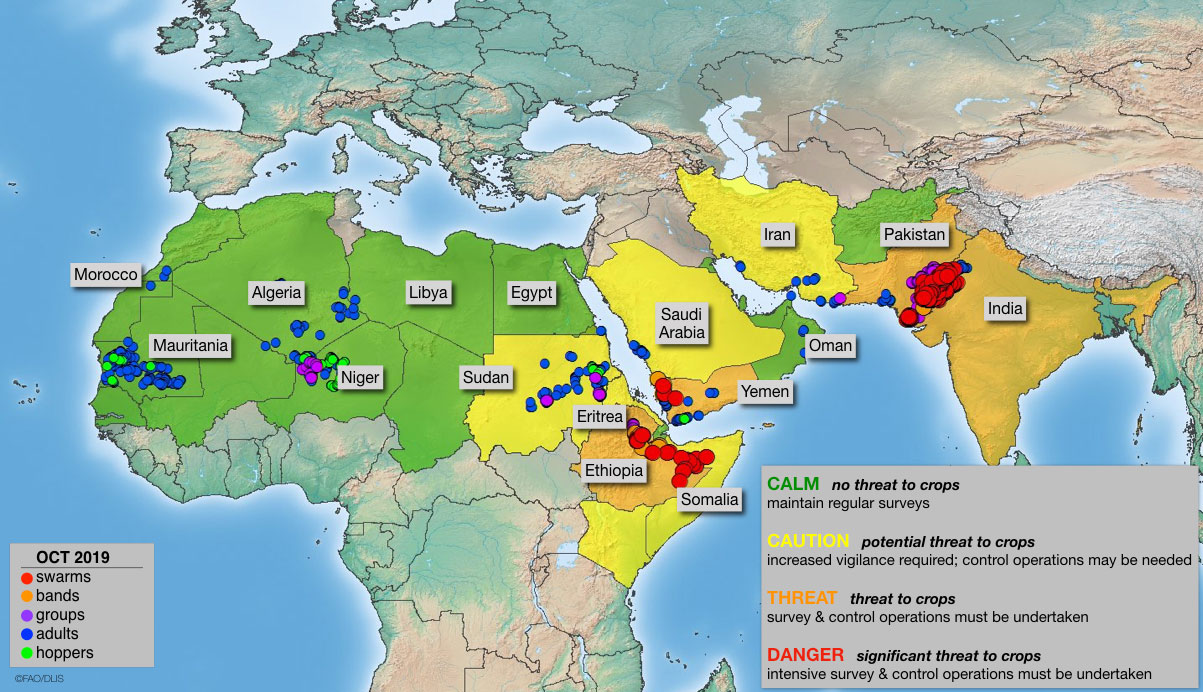
28 October. Threat level continues in southwest Asia and the Horn of Africa
The risk to crops is threatening along the Indo-Pakistan border, on the Red Sea coast in Yemen and Eritrea and in Ethiopia due to current breeding and potential migration.
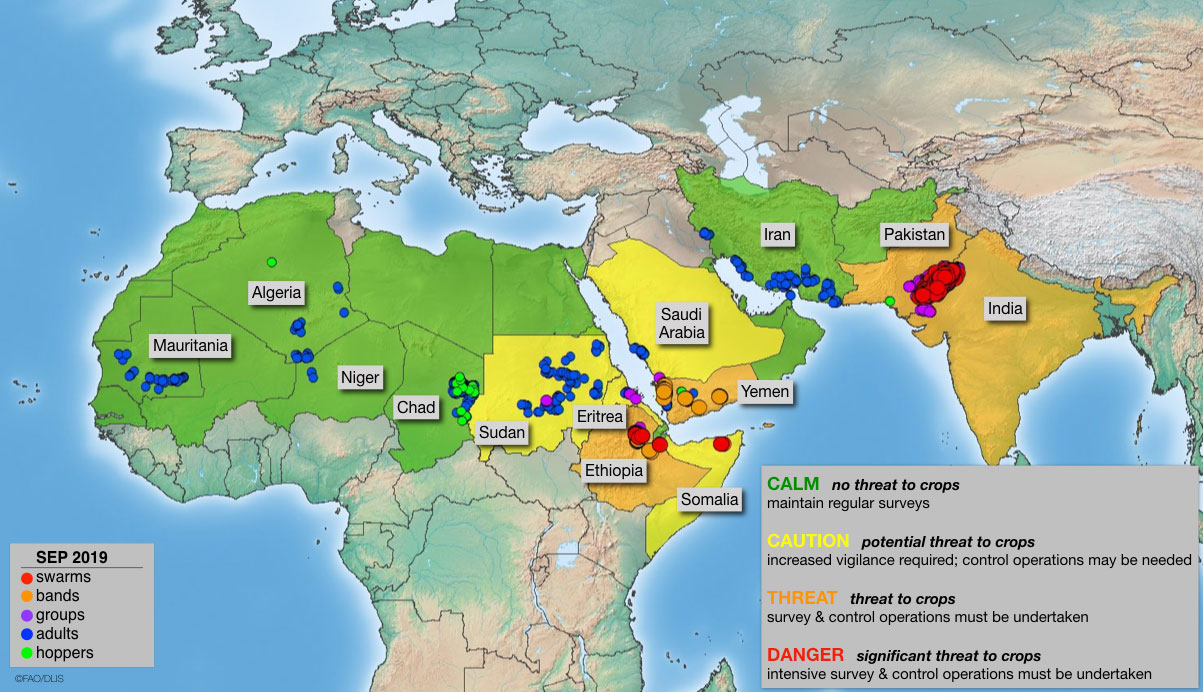
13 September. Threat continues in Yemen and India-Pakistan area
The threat level remains at THREAT stage in Yemen, India and Pakistan but declined in Sudan due to normal breeding.
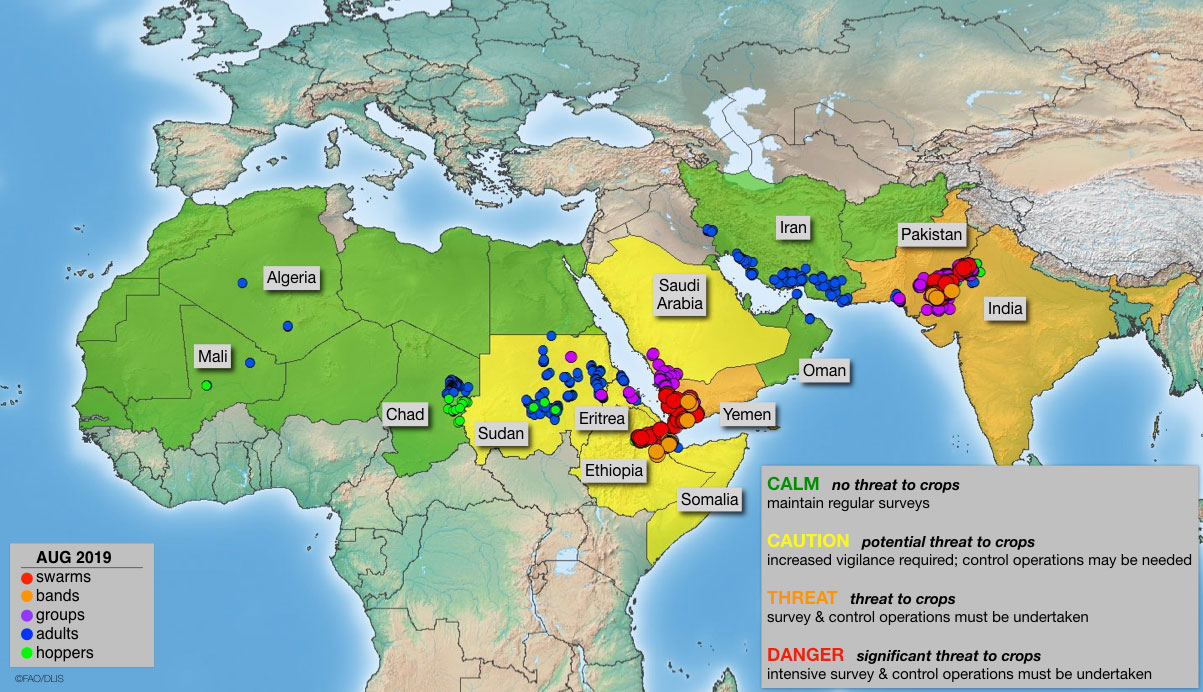
2 August. Threat remains greatest in Yemen and India-Pakistan areas
The threat level remains at THREAT stage in Yemen, India and Pakistan due to the presence of swarms and continued breeding.
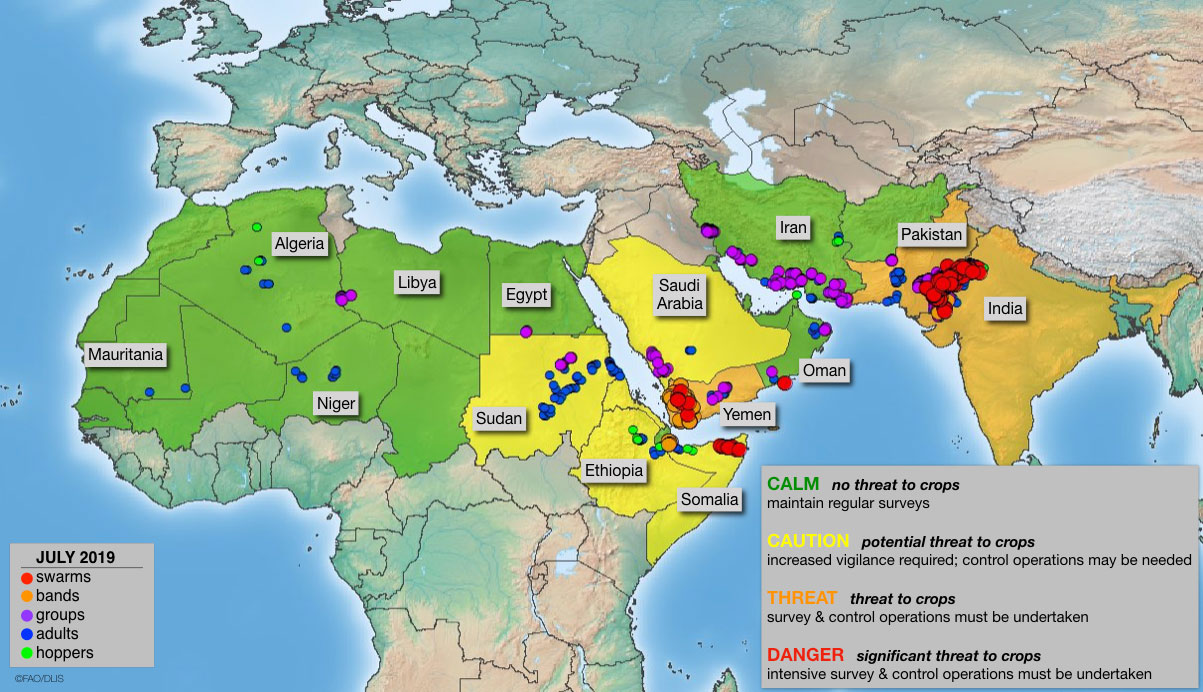
4 July. Threat spreads to the Horn of Africa
The threat level has been updated according to the migration of spring-bred swarms towards the summer breeding areas.
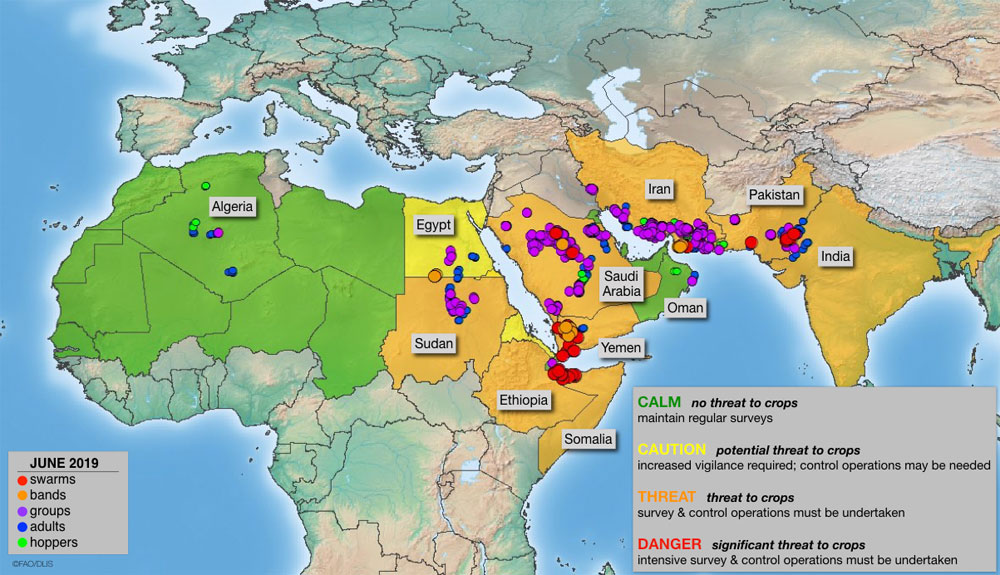
5 June. Spring-bred infestations threaten summer areas
The threat level has extended to other countries that may receive swarms from spring breeding areas in time for summer breeding.
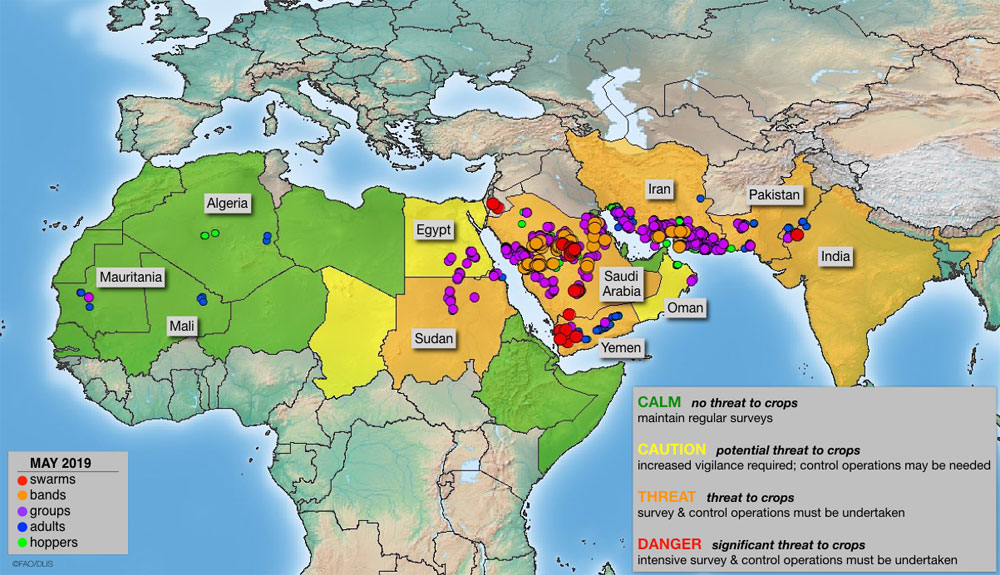
3 May. Locust infestations increase in spring breeding areas.
The threat level has increased in spring breeding areas as a result of band and swarm formation and declined in winter breeding areas due to control operations and dry conditions.
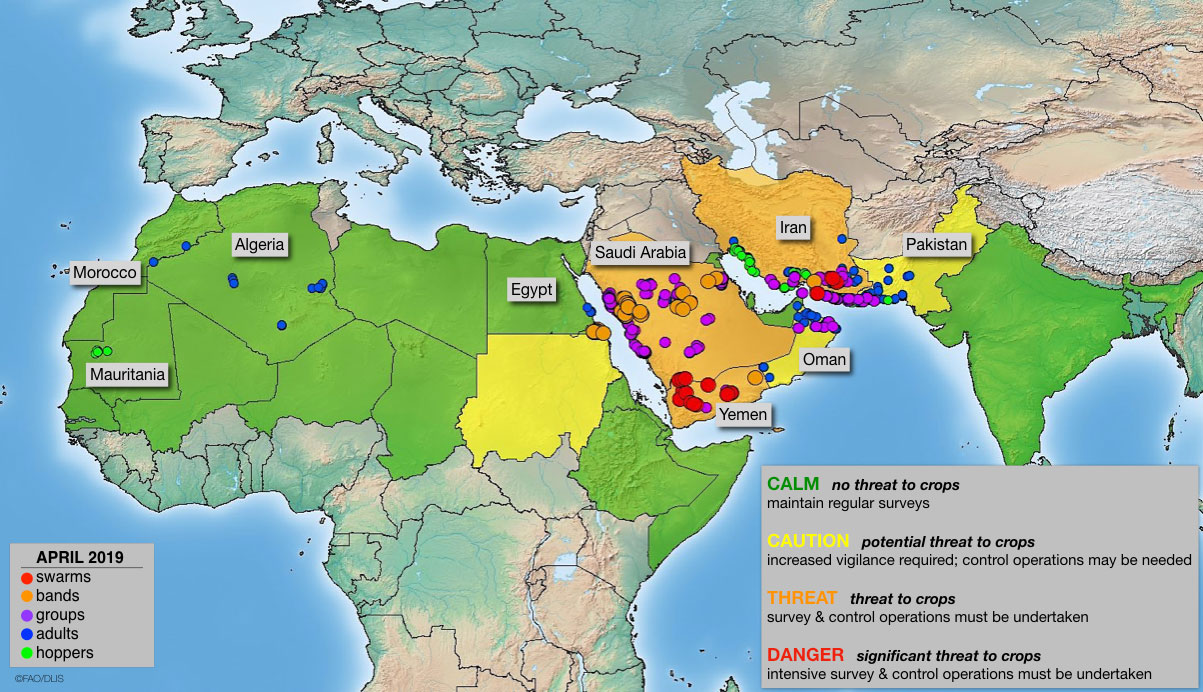
3 April. Situation improves along parts of the Red Sea coast as spring breeding starts
Locust infestations continued to decline due to control operations and drying vegetation in winter breeding areas while breeding commenced in spring areas; therefore, vigilance and control operations must be maintained in all affected countries.
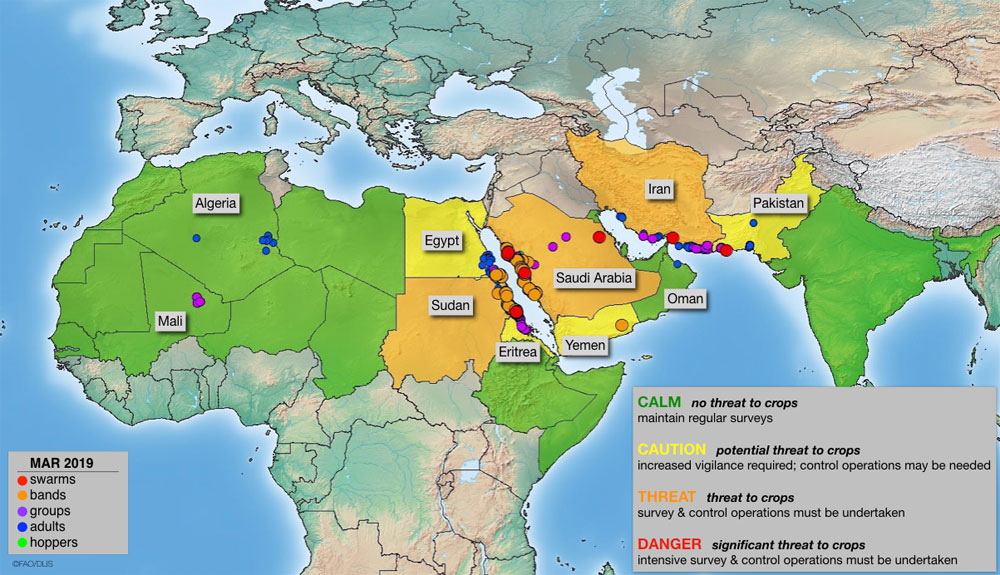
4 March. Situation improving along parts of the Red Sea coast
Locust Infestations were declining due to control operations and drying vegetation; nevertheless, vigilance and control operations must be maintained to reduce swarm formation and migration to spring breeding areas.

4 February. Swarms form and migrate in the Central Region
As more groups, bands and swarms form from second generation breeding along the Red Sea coast, some swarms migrated, leading to increased risk levels in several countries.

9 January. Outbreak develops in Sudan and Eritrea
The Desert Locust threat increased significantly in Sudan and Eritrea as a result of an outbreak that developed in winter breeding areas along the Red Sea coast during December, which is likely to continue for several months.





